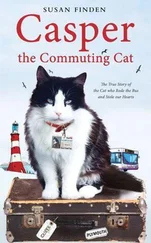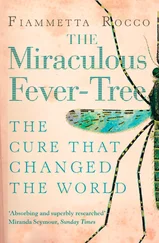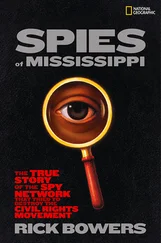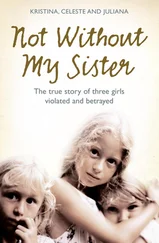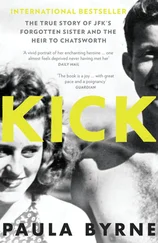So far as anyone can tell, or cares to recall, Josephie Flaherty was a balanced child with neither excess nor deficit of ihuma . In retrospect, some who knew him talk of having detected a hint of oversensitivity, some nub of excess, but most speak of him as a loving boy, helpful, loyal and a good son to Maggie. He was, they say, self-reliant, quiet, even brooding, someone who got on with what he had to do without a fuss, and with no particular consciousness, at least in his early life, that his mixed blood marked him out as different. He felt himself to be Inuit, with all that being Inuit means. The ties that bound him were the ties of his Arctic family and for the remainder of his life they would be indissoluble.
There was no getting away from the fact that Josephie was different, though. He grew up tall with gangly limbs and softer, less ruly hair than that of full-blood Inuit boys. His lips were fuller, the face longer, his eyelids adopting a compromise position, halfway between Asia and Ireland. His arms were unusually long and his paddle hands lent him a seal-like air, an impression only strengthened as he headed into puberty and sprouted whiskery facial hair.
Josephie Flaherty's early life was measured out in ship years, by the annual arrival and departure of the supply ship, Nascopie .
There was a saying in Inukjuak that the second best day of the year was the day the Nascopie arrived and the best day was the day it left. No one disputed which of these days was the more exciting. The moment news of the ship's imminent arrival reached them from the north, men all along the coast would fire their rifles. The members of the Nujarluktuk family would quickly change into their smart clothes, rush down to the shore and paddle out to meet the ship, moving alongside it for a while to exchange smiles and waves with the crew, the Hudson Bay trader, the policemen moving between posts, the missionary, the medic, the civil servant and the occasional geologist or researcher on board. If young Josephie ever looked for his father's face among the passengers, he would not have found it, but it is perfectly possible that he would not have looked.
The family would make their way south along the coast to the mouth of the river, where the high-summer water, free now from ice, rushed to meet the sea, and they would tie up their boats at the ‘pier’, a strip of sand lined with rocks at the water's edge. By the time the Nascopie was at anchor, the family's tent would be up, its guys secured to rocks, and the women would be arranging skins at the sleeping end and stoking a willow-twig fire on which to make tea. A while later, the ship's whaleboat would begin chugging towards the shore, and the Hudson Bay Company post's boat would head out to meet it. From 1935, when the first police post arrived in Inukjuak, an RCMP Peterhead joined the little flotilla. The police were not a welcome arrival. The Inukjuamiut could not see the point of them, since no one ever broke the law. Their chief role, so far as the Inuit were concerned, seemed to be to busy the settlement flagpole with its Union Jack and Maple Leaf every ship time. The routine was always the same. Shortly after the flags began to billow a priest of some sort would be dropped off at the detachment, along with another man in police uniform and an assortment of other qalunaat , the flags would flutter upwards and the assembled would sing ‘O Canada’ to a circling audience of mildly puzzled loons. From the vantage of their tents the Inuit would shrug and mutter ayunqnaq , it can't be helped.
For the next three days they would all be treated to the bounty of the Hudson Bay Company and the government of Canada combined, which is to say that once the ship was unloaded, the bill of lading checked, the cargo neatly stacked in the Hudson Bay Company store, there would be a ‘mug-up’ and all the sugared tea the Inuit could drink accompanied, perhaps, by some hardtack biscuits and a sardine or two. The mug-up would give way to races, a cat's cradle competition and, perhaps, a football game, the prize for which might be a can of sardines or, perhaps, a tin of hardtack. The following day there would be more tea, a solemn sermon from the visiting priest (Anglican), followed by a photography session during which various qalunaat would snap Inuit stiffly sporting their best ceremonial parkas. These same qalunaat might then buy a few souvenirs, sealskin clothing, ceremonial drums, soapstone carvings and the like, before boarding the ship once more. After that, the Inuit would be sent to the Nascopie 's medical rooms for a cursory check-up and a reward of a box lunch of hardtack biscuits and sardines. Finally, there would be a showing in the Hudson Bay Company store of a movie, often something with a sea or sailing theme. Though you might think it an obvious choice, so far as we know, Nanook of the North was never shown.
The Nascopie also brought the annual mail. For the first thirty-three years of his life there was never anything for Josephie, which was okay since he could not read.
The day after the screening, at some point during the night, the Nascopie would weigh anchor and began its 400-mile journey west to Churchill, Manitoba, on the other side of Hudson Bay. Some of the Inuit would paddle with the ship for a while, others would watch from the shore, then they would change back into their workaday clothes and would begin to gather their belongings for the journey back to their camps. Those who had credit at the store would stock up on ammunition, flour, lard, tobacco and tea before they went. The remainder would have to make do until the winter trapping season began once more. Within a week, most of them would already have left the settlement. Another year would go by before they would hear again from the other world to the south.
And so the years floated inescapably by. Josephie grew taller, angular, nervous and quick to smile. His contemporaries had him down as a watcher, one of those people who are forever to be found on the edges of things, looking in. In January 1929, when Josephie was just 7, Thomas Mayne ‘Pat’ Reid piloted the first plane across Ungava. It was a fine, sun-dazzled winter day, the sky vivid, cloudless, the air crystalline and smelling of electricity. The first hint that this day was likely to be any different from the last was when the dogs started to become restless and shift about. A long while later, an unfamiliar whirr was carried in on the wind. People emerged from their snowhouses, tied their snowgoggles to their faces, gazed up at the sky. The noise did not go away. Instead, it devolved into a tremulous buzz. Children clamped their hands to their ears. Their mothers gathered them up, shooing them back into the snowhouses, whilst the men grabbed their guns and stared at the clouds, waiting, until the throb accreted into a whine and the whine slid into a sound something, but not quite, like the clash between two bull walruses and a giant mechanical mosquito suddenly appeared, dipping dementedly through the sky towards the settlement. The machine continued along the shoreline, swooped down momentarily, then passed by, gradually diminishing until it disappeared in a band of coastal fog, the final remnant of its existence an almost imperceptible shivering in the air, an electric smell not unlike the Northern Lights and a distant sound like the burr of bees.
For weeks after this event, no one could speak of anything else. Inuit families sledged between camps and into the settlement, trying to glean more information. The Inuit rapidly found in it a rich vein of humour. A giant mosquito with a man inside! The post manager's explanation seemed just as unlikely as the creature itself. Why would anyone have wanted to cross so much land when there was already so much nearby?
Читать дальше

